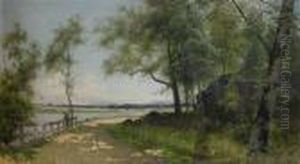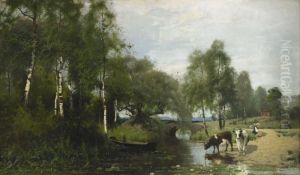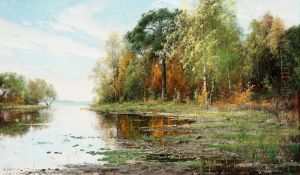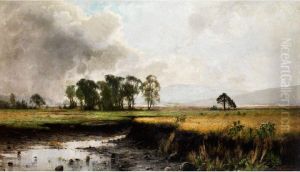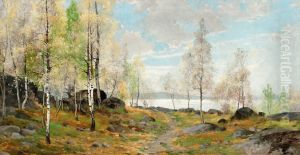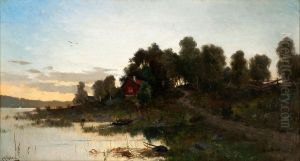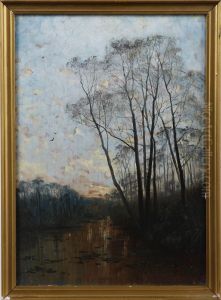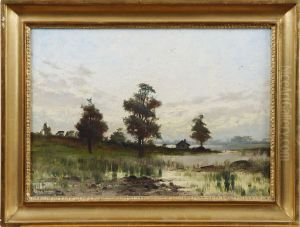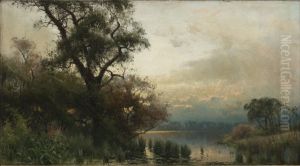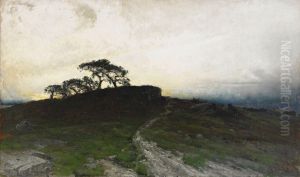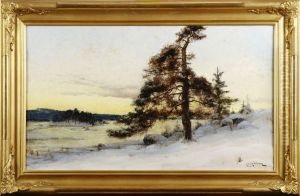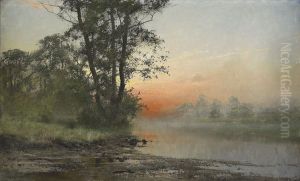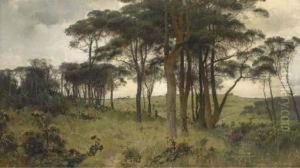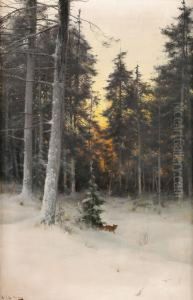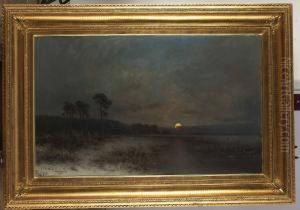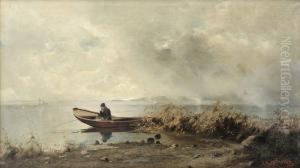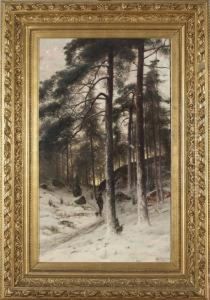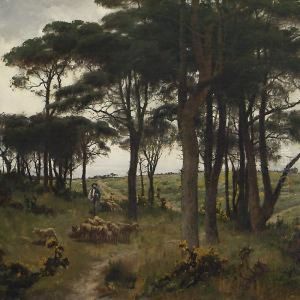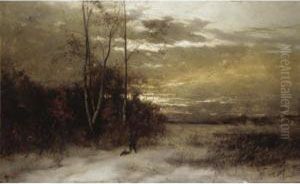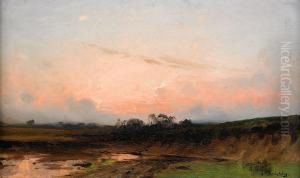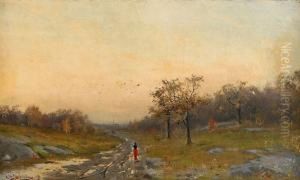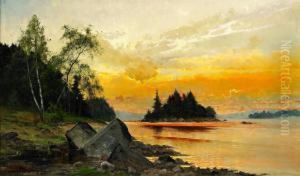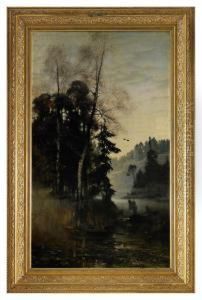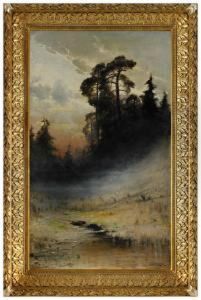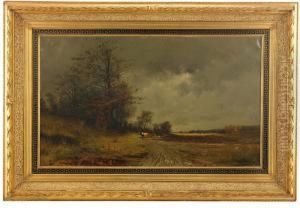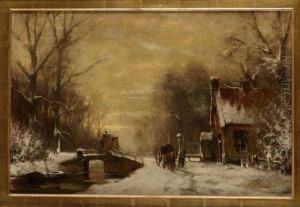Arvid Mauritz Lindstrom Paintings
Arvid Mauritz Lindström was a Swedish painter, born on September 26, 1849, in Gävle, Sweden. He is often remembered for his landscape paintings, which are characterized by their naturalistic style and often depict the beauty of the Swedish countryside.
Lindström's early interest in art was nurtured by studying at the Royal Swedish Academy of Fine Arts in Stockholm, where he began his formal education in 1869. His time at the academy allowed him to develop his skills and establish a foundation for his artistic career. He was influenced by the works of contemporary Swedish artists, as well as the broader European art movements of the time.
After completing his studies, Lindström traveled extensively, which was common for artists of his era. He visited various countries across Europe, including France and Italy, where he was exposed to different styles and techniques. These travels played a significant role in shaping his approach to painting, particularly his use of light and color.
In the 1870s, Lindström moved to Paris, which was then the epicenter of the art world. The vibrant artistic community in Paris and the exposure to the work of French Impressionists had a profound impact on his art. He began to adopt some of the Impressionists' techniques, integrating them into his own unique style. Despite this influence, Lindström never fully embraced Impressionism, and his work remained rooted in a more traditional, realistic approach.
Throughout his career, Lindström exhibited his work in various venues, including the Paris Salon, where he received recognition for his landscape paintings. His works were appreciated for their attention to detail and the serene atmosphere they conveyed.
Lindström returned to Sweden later in life and continued to paint the landscapes he loved so much. His paintings from this period are marked by a mature style and an enduring appreciation for the natural world. He passed away on October 11, 1923, in Stockholm.
Today, Arvid Mauritz Lindström is regarded as an important figure in Swedish art history. His paintings are part of several museum collections, and his contribution to Swedish landscape painting continues to be celebrated for its poetic interpretation of nature and its serene depiction of the Scandinavian environment.
